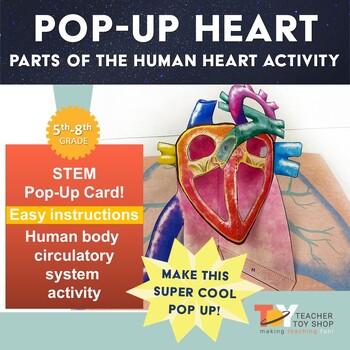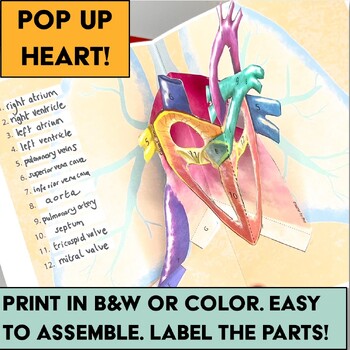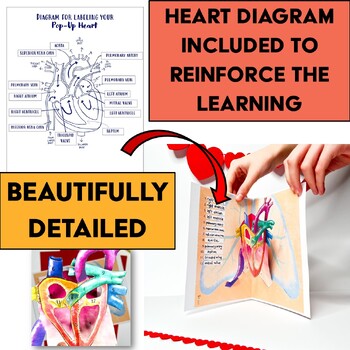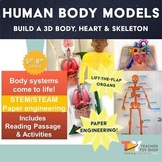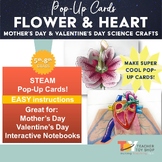Human Heart Circulatory System STEAM Paper Model Activity
- PDF
- Google Apps™

What educators are saying
Also included in
- Teach the human heart and circulatory system with this bundle. These activities are lots of fun and your students will remember the parts of the heart and understand the cardiovascular system, heart anatomy, and the path of blood flow through the body when they've completed them. Ideal for middle scPrice $7.25Original Price $9.25Save $2.00
- Make anatomy models out of paper! Learn about human body systems while making these models. They're EASY and require only paper, tape and glue. Students will gain an understanding of the major systems of the human body and have a final project they are VERY proud of. These human body projects make tPrice $18.99Original Price $23.49Save $4.50
- Looking for a SPECTACULAR science project for Mother's Day or Valentine's Day? These will not disappoint! Your students will make a flower popup card and a heart popup card and learn the parts of a flower and parts of the human heart.You can have students label the flower parts or the heart anatomyPrice $8.99Original Price $10.50Save $1.51
- All of Teacher Toy Shop's Life Science resources in one place! Some biology topics included: cells, ecosystems, human body systems and organs, flowers, reproduction, human eye, and more. Includes NGSS aligned lessons, experiments using the Scientific Method, and more.Purchase this bundle for a low-pPrice $49.99Original Price $80.66Save $30.67
Description
Immerse your students in the intricacies of the circulatory system and human anatomy with the Human Heart Circulatory System STEAM Paper Model Activity. This innovative project combines STEM and STEAM elements, allowing students to construct and label a captivating 3D pop-up card showcasing the parts of a human heart diagram. The end result is not only an impressive addition to interactive notebooks, but also serves as a delightful Valentine's Day or Mother's Day pop-up card or a thoughtful gesture for any occasion.
Designed for middle school students, this heart activity surpasses traditional circulatory system worksheets by offering a hands-on experience that facilitates a profound understanding of the path of blood flow through the human body. The easy-to-follow, three-step instructions, along with a video tutorial link, ensure a seamless assembly process. The printable heart files come in both color and black-and-white versions, catering to various preferences. This project can be completed in just one class period.
In addition to labeling the heart's components using the provided Parts of the Heart Diagram, students can personalize an all-occasion card using the bonus template. The numbered parts, including the left and right atrium, ventricle, aorta, vena cava, pulmonary veins, pulmonary artery, mitral valve, tricuspid valve, and septum, enable a detailed exploration of heart anatomy.
This versatile project extends beyond traditional classroom settings, making it suitable for distance learning or remote teaching using the included Google Slides™. Simply distribute the printable heart pages, and students can follow the instructions or watch the video for assembly using only glue and scissors.
Elevate your anatomy lessons with this unique STEAM project that not only educates but also warms hearts.❤️
► What's Included?
- Printable Heart Files (Color + B&W)
- Simple (3-step) Instructions for making the paper heart PLUS a link to watch a video showing how to make it. There is also a link to the instructions on Google Slides™.
- Instructions for labeling the parts of the heart including a Parts of the Heart Diagram
- Answer Key
- Bonus: Also includes a template without blanks to label the heart anatomy which can be used to make an all-occasion card!
You Might Also Like...
⚠️ BUNDLE & SAVE! ⚠️ Want to get all of my Life Science resources at a steep discount? Click here to view my Life Science Activities and Lessons Bundle!
✪ Don't forget to follow Teacher Toy Shop to be the first to know about new products, sales and freebies!

